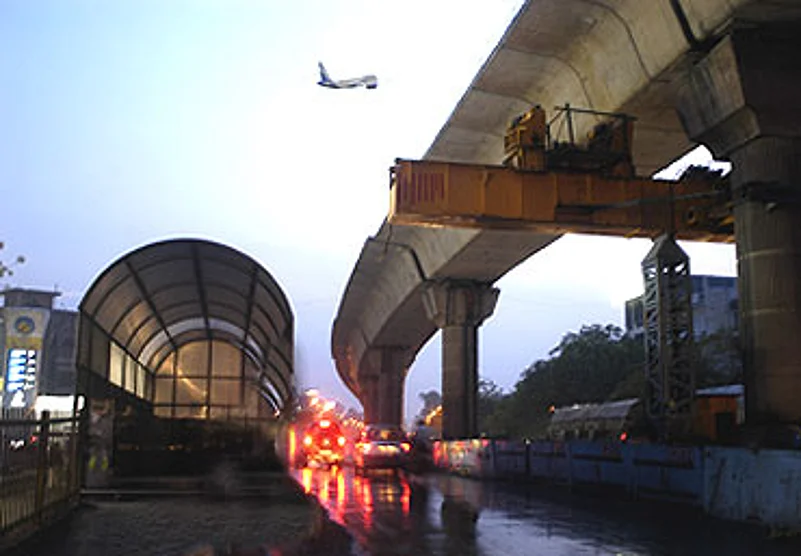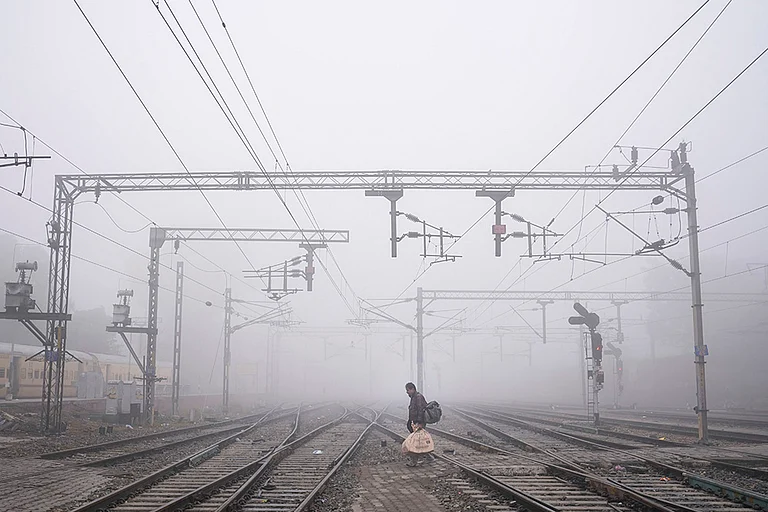- 1. Rescue package for exporters, small sector
- 2. Prune misdirected subsidies, dilute PSU stakes
- 3. Reskill laid-off workers, target jobs in services
- 4. Channel investments to highways and power
- 5. No tax breaks, bring in Goods & Services Tax
- 6. Push SEZs, set up pension regulator
***
- 1. Despite the Satyam scandal, no forward movement is expected in Companies Bill
- 2. Labour, financial sector and disinvestments are in the deep freeze of coalition politics
- 3. Vested interests continue to stall simpler laws for land holding
- 4. Accountability for government employees
***
And by now, eight months into the worldwide economic downturn, a cross-section of economists and politicians agrees that the undoubted priority for any new dispensation is the immediate revival of the economy. That’s on a good day. On a bad day, all they’re hoping for is a government that can stay focused and not endlessly launch new schemes. Economist Rajiv Kumar, who heads research outfit ICRIER, says the new government must immediately declare that its primary focus is achieving high economic growth. That seems obvious, but is actually crucial at a time when many feel that the worst is over, but no one is signalling a return to the good times of yore. This in-between phase for the economy makes the new government’s task much tougher: it has the headache of dealing with the bills of the previous stimulus packages with a limited bank balance to tackle further demands.
Despite the visible signs of recovery, within the first month or two of coming to power, there are chances that industry and consumers will expect a fresh round of financial stimulus. "It’s entirely the responsibility of the next government to immediately revive the economy," says Sudheendra Kulkarni, a political analyst aligned with the BJP. That’s why a further delay in reforming and overhauling the tax administration system could cost the country precious revenue at a time of increasing distress in the government’s books. Cumulative government debt is 80 per cent of the GDP, and the combined fiscal deficit may mount to over 12 per cent of GDP. Widening the tax net and switching to the far more revenue-buoyant Goods and Services Tax system assume priority. It also rules out tax breaks and limits the government’s ability to spread feelgood cheer.
While exporters and small industry in particular are still in trouble, India Inc has, but naturally, added on a huge list of demands—increase sops, lower interest rates, and protection from dumping. The new government will have to judiciously listen to all these demands—and act in tune with market realities. This will crucially play out over the management of interest rates. Cuts in benchmark rates by the Reserve Bank of India (RBI) have allowed greater liquidity in the market. This has reduced interest rates on loans to end-users like companies and individuals. Given that the market perceives a bottom has now been reached, the challenge will clearly lie in exiting from this low-rate regime. RBI governor D. Subbarao has already mentioned that exit options now need to be thought out in order to avoid the building up of inflationary pressures.
It is also important that banks are able to breach the gap between supply and demand and continue to lend to provide the necessary spurt to the economy. Although some of the extreme caution exercised by banks soon after the financial crisis emerged has abated, firms are still scrambling around for funding. The finance ministry and the central bank will have their task cut out to ensure, without micromanaging, that banks actually lend.
Apart from all the fire-fighting, there’s lots more governance at play. "It’s literally true that regardless of the formation that comes to power, crucial proposals that are hanging fire ought to be the first priority. The work will be roughly cut out for any government," says N. Madhavan of PRS Legislative Research, an independent think-tank based in New Delhi. He settles on formally approving a regulatory body for the pension system and not letting the Rehabilitation and Resettlement Bill—which was framed after widespread protests over land acquisition for industrial projects—lapse once again. "Education and agriculture are two key areas where a lot needs to be done. And they are critical to equitable and rapid economic growth," adds ICRIER’s Rajiv Kumar.
Unfortunately, there’s no dearth of proposals, which are now more easily rolled into the ticking time bomb called "improving governance"—a catch-all phrase that implies the government must provide better quality food to the poorest, take care of school-going children’s meals, improve healthcare access for the needy, build cheaper houses and stanch funding ‘leakages’ in the system. Some of this may very well happen—the budget of the new government will be introduced before July 2009, and it presents a small but distinct window of opportunity to push forward proposals to revive spending and employment. The new government would do well to announce plans to reskill the lakhs of people that have been laid off over the past eight months or so. Another key area for the first 100 days will be to find ways and means to boost and channel investments into infrastructure.

Focal point: Investment in infrastructure will remain important
Roads and highways, whose construction has slowed over the last couple of years, will need funds. The effort could begin with releasing some of the Rs 40,000 crore corpus for infrastructure set up by the government, of which only Rs 10,000 crore has been designated for expenditure—but not actually spent—so far. This will also imply finding ways to ensure the duration and quality of foreign inflows—making sure that Indian stockmarkets are not vulnerable to speculative money and at the same time allowing foreign investments to fuel growth in key areas like infrastructure.
Among reforms, much of the limelight is hogged by the insurance and banking sectors, where changes have been expected for a while now. After the global financial meltdown, don’t hold your breath expecting far-reaching reforms. Any government would have a cautious outlook. At the same time, clarity on the pensions fund regulation is required to make the recently launched New Pension Scheme gather any steam.
While food supplies are abundant—and the monsoon forecast looks good—if agriculture continues to stagnate at two per cent growth or under, even six per cent overall growth will be a struggle. Ashok Gulati of IFPRI says value addition in agriculture will need to be addressed more head-on. Ensuring ample availability of quality seeds—a related bill is pending since 2004—should also top the new government’s agenda. So should ensuring availability of other agricultural inputs. The government would also need to streamline subsidies—even consider the politically difficult choice of freezing today’s high minimum support for many crops, at least for a few years.
Another area of concern is the international perception of India at a time when it seeks the respect that its booming economy deserves. According to Ram Upendra Das, a fellow with RIS, a think-tank under the UN umbrella, India needs to give the signal to the world that it can adhere to its economic commitments. "These include the India-Thailand free trade agreement, and the India-ASEAN FTA," he says. With a growing global push towards protectionism—and an alarming echo within the country—India will have to tackle the fallout aggressively. Its economic diplomacy will be under test over the months to come—the fortunes of key services sectors like IT hang in the balance.
Indeed, the task is not simple. The list of what the government can—and should—do is long, but not all are holding their breath. UNICEF’s Dr N.C. Saxena says he expects the first 100 days to yield a lot of rhetoric, but not much else. "Instead of starting new programmes, the new government would do well to revamp existing ones," he says. Even the weariest public can have an endless wish list, but what they’d settle for any day is a firmer and easier-to-grasp government whose moves can be easily understand. Everything else remaining the same, that would be the best possible outcome for the new government’s first 100 days.
By Pragya Singh and Lola Nayar with Arti Sharma and Arindam Mukherjee


























